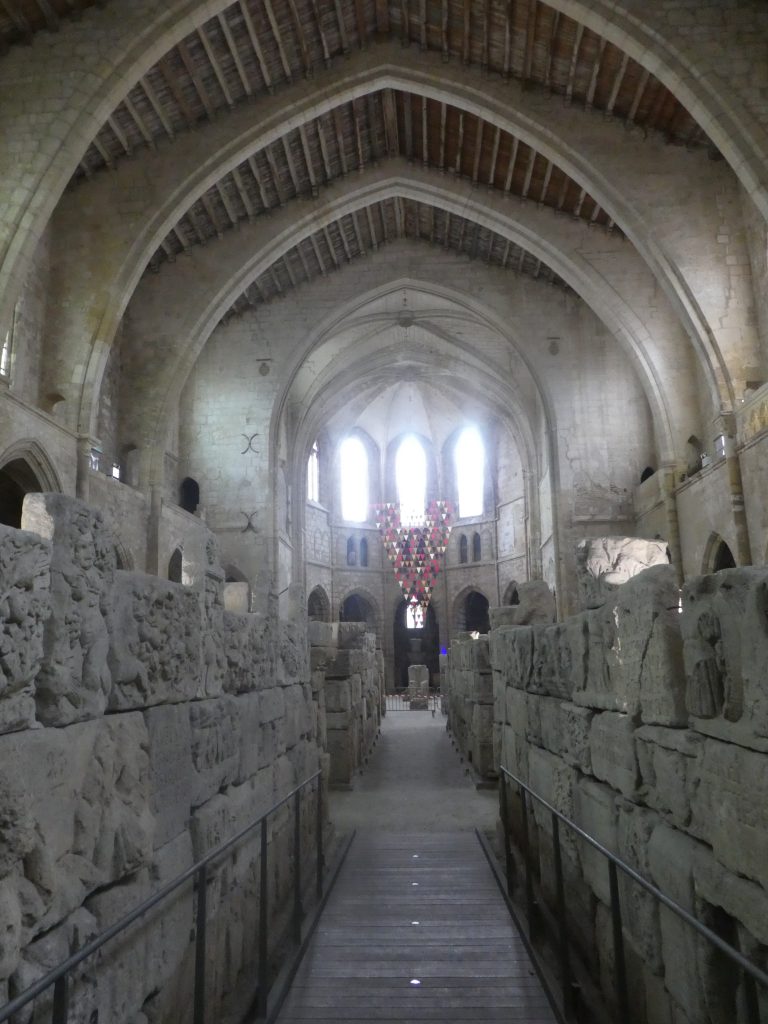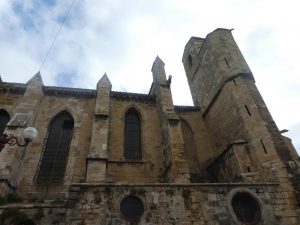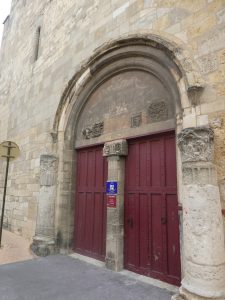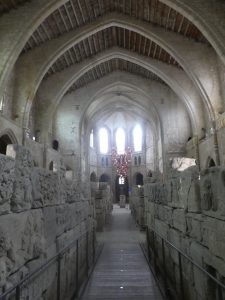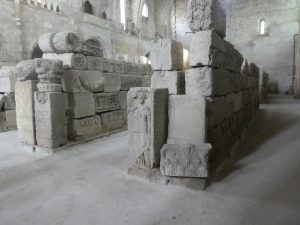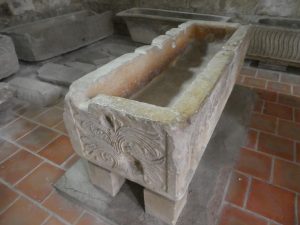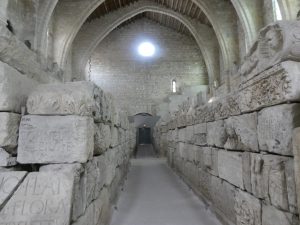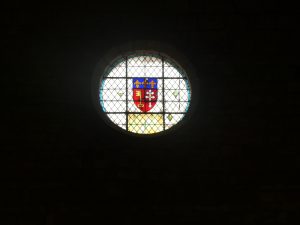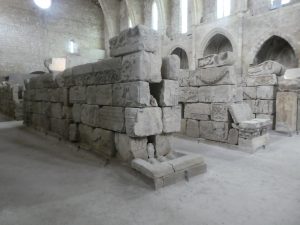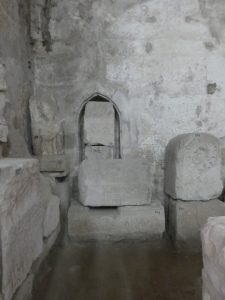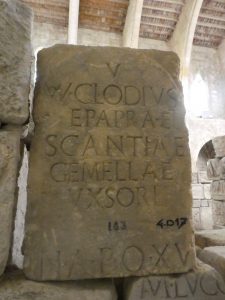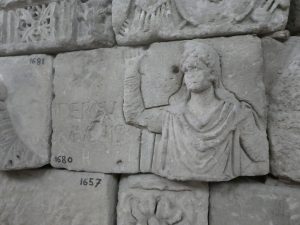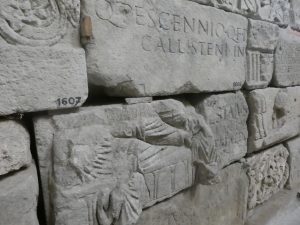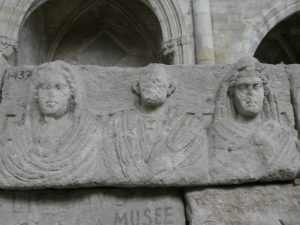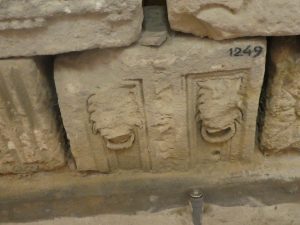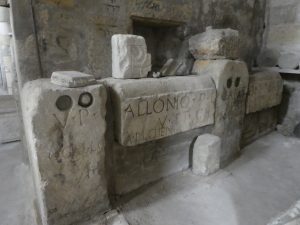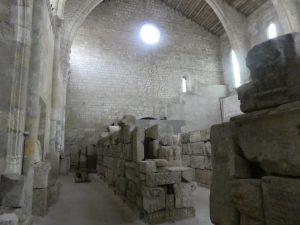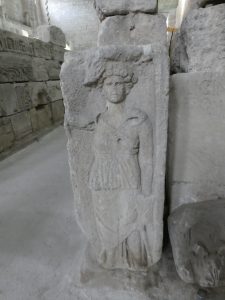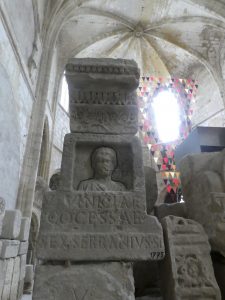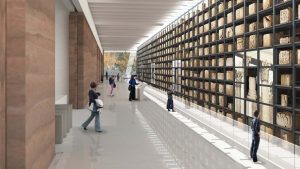Narbonne – Eglise Notre-Dame de Lamourguier (and Narbo Via Museum)
This is Eglise Notre-Dame de Lamourguier in Narbonne, a beautiful thirteenth century Gothic church. I visited in 2017, not just because it looked an interesting church, but because it housed nearly 2,000 blocks from the Roman period. They had been used in the construction of the city walls in the sixteenth century and when in the 1860s the walls were taken down, they clearly didn’t know what to do, so they dumped them all in the church. And there they remained until very recently, although fortunately, I saw them in situ.
When I visited I tried the door and it was shut. I assumed that I had misunderstood the opening times or that they were perhaps a little fluid, so I meandered off, probably slightly grumpy. A staff member then rushed out of the door and said something random in French (it probably wasn’t random to her), which transpired to be her telling me she had forgotten to unlock the doors and had wondered why the museum was quiet. Fortunately, I banged about on the door because I’m slightly clumsy, so she heard me. Very friendly welcome incidentally, I was given a sheet in English telling me what to look out for.
I accept that this looks like some arrangement that I’ve set up, stacking up thousands of pieces of Roman stone in an historic building.
Perhaps at first it looked like it might all fall down, but it was in fact all quite safe. Or, at least, I didn’t knock anything over. So, here are some photos of the stone and it’s pretty clear to me now that I’ve forgotten to take a photo of the information sheet, so I have no bloody idea what half of this is. Or indeed any of it. But I know I spent well over an hour looking for the stones the curators thought were of particularly importance.
I thought that this was quite magical, especially as I was the only person meandering their way around the museum, which was primarily I suspect because the staff member had forgotten to open it.
One sad thing though, and as usual, I’ve found something to moan about. I visited here in 2017 and I’ve discovered that they’ve moved all this to a brand new museum designed by Foster & Partners. The museum isn’t quite yet open and having looked at the plans that have been published, I completely hate the new building.
This looks hideous to me, creating a sense of distance between the stones and the visitor, and instead getting them to use a screen to no doubt find out more. They’re stacking up these items up so they can’t been engaged with and it looks like an Amazon warehouse, bright, but not really conducive to a useful visitor experience. If that means you can see the objects up close like at the National Railway Museum stores, then that is quite marvellous, but in the image above the barrier that forces visitors several feet away from the stones is visible. The plan is to split the nearly 2,000 stones that were in the church so they heap a load in a wall which has no relevance to anything, and put hundreds of others of them in a reserve store. A great deal of bloody use they’ll be there.
This is the other design image. Well, what a lovely cafe the museum will have. Who needs heritage when you can have a lovely cafe?
I’ve spent a little time trying to find out what the reaction of other people in the locality is, as I tend to have an instant dislike to museums where they put technology ahead of the thing they’re meant to be displaying. I haven’t found much, but what I have found is pretty negative about the presentation of the stones and one person has said they’ve shoved them all behind wire mesh. Anyway, since the museum isn’t open yet and I haven’t visited it in its new location anyway, perhaps it’s all lovely and better than I expected.
But, I still love how the stones were presented in the Eglise Notre-Dame de Lamourguier, making it one of the most memorable museums that I’ve visited.

